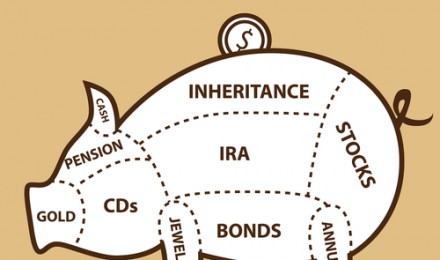The 401k retirement plan allows employees to make contributions to a defined contribution plan. The 401k savings plan helps individuals prepare for retirement by saving and investing with pre-tax dollars. This tax-advantaged savings encourages them to save the necessary funds to support their lifestyle during their retirement years.
The primary advantage of the 401k savings plan is the ability to accumulate retirement money on pretax dollars. Participants are taxed on the contributions and accrued earnings when take the money out. Some 401k plans also allow employees to contribute after tax dollars.
You save on taxes by because deferrals made to 401k plan lower your taxable income.
The following provides the basic information you need to help you evaluate your situation and determine if your retirement program is headed in the right direction.
Understanding the Rules
According to Fidelity Investments, individuals age 25 should start out saving six percent in their company’s 401k program. Increase this percentage by one percent a year to get it to 12 of annual salary.
These plans can vary from employer to employer, but most 401k plans have the following features:
- Contribution limits
- Investment options
- Vesting schedule
The employer deducts contributions for the 401K plan participants from their pay check each period. The money is not taxed until distribution from the plan. Employees can choose from one or more funds.
- IRS rules allow each individual employee a deferral of up to $17, 000 in 2012.
- People age 50 and older can make “catch-up” contributions of $5, 500 in 2012.
An employee’s contributions to their account become 100% vested immediately. Some employers add a voluntary matching contribution component to their 401 k plans.
Remember, each plan works differently. Find out from your benefits department the basic for your company’s 401k plan.
Matching Contributions
The employers’ contribution can vary. For example, one company can match 50% of the first six percent or 50 cents for each dollar contributed up to six percent of an employee’s salary. Another firm may match 100% of each dollar up to 3 1/2 percent.
Many organizations apply a waiting period before new employees can start making contributions – usually 30 days to a one year. A waiting period may also apply to the firm making voluntary matching contributions to your account. Another aspect of 401k retirement plans is profit-sharing.
The profit-sharing component enables companies to share their success with their employees by designating a pool of money to be shared by employees.
Advice from Experts
Conventional wisdom dictates paying yourself by making it a priority ahead of other obligations. Many financial planners recommend employees contribute at least enough to the 401k plan to qualify for the full employer matching contribution.
Make the maximum allowable contribution to the 401 k plan, especially with matching contributions, before making other investment such as IRAs. Steady consistent contribution will help the account grow faster.
Many analysts would advise 401k plan participants to continue making contributions to their retirement accounts even through the ups and downs of the stock market. Examine the holdings in your account to determine if the contributions are allocated to generate the desired results.
Unfortunately, if have not already sign up for the program, you will have to wait for your company’s sign up period. Speak to someone in Human Resources department to obtain information on the 401k program and find out when you can register.







